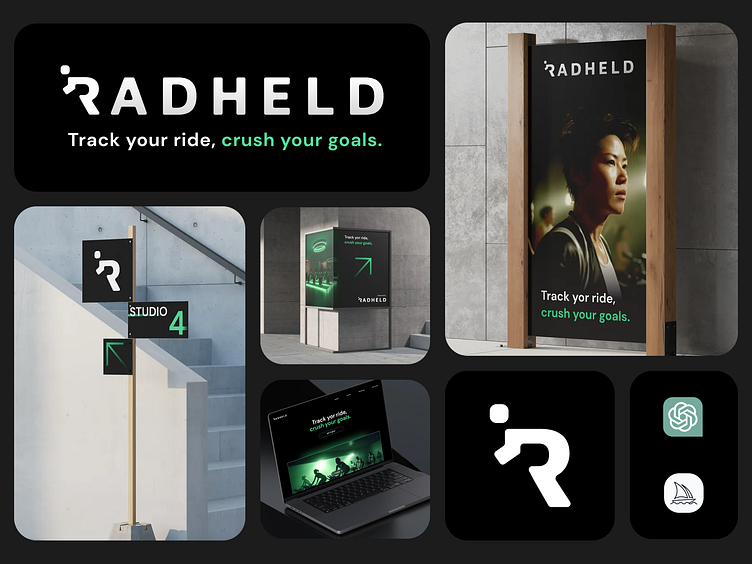Readheld Part 2 · Name and branding
You can find the first part of this project at https://dribbble.com/shots/21180460-Radheld-Exploring-the-Role-of-AI-in-Product-Design and the full article on Medium.
On this one, I will explore how Chatgpt helped me to create a name and a slogan, and how Midjourney generated unique high quality images.
Step one · Naming
Choosing a name is no easy feat. It’s a decision that comes with a long-term commitment. You have to pick a name that you’ll love and be able to say it out loud with confidence. Luckily, ChatGPT can make this process a lot easier for you. By asking for name ideas for your product, you’ll be presented with a variety of options to choose from. While some may be excellent, others may not be as great. For instance, I asked for English names but wasn’t too fond of most of them.
As a history enthusiast, I find it fascinating when new things use their origins as inspiration. In the case of the bicycle, it was invented in Germany back in 1817. With this in mind, I requested that ChatGPT come up with some German name suggestions. After generating a list of names and their English translations.
I settled on “Radheld” which means "Cycle Hero". It sounded bold and unique, and, best of all, no apps on the app store had that name yet. Points to ChatGPT.
Step two· Slogan
Expressing the essence of your product in just a few words is no easy task. It requires a careful balance of brevity, impact, and inclusivity. After all, the goal is to create a tagline that speaks with all of our users. ChatGPT gave me good examples and I made a mashup with two of the options given.
Track your ride, crush your goals.
It communicates with the ones starting cycling and the ones who are challenging themselves. Keeping track of your progress is essential to staying motivated. With features designed to help you “crush your goals,” we challenge you to push yourself further in each class.
Step three· Logo
This was the first time I felt let down by AI. Midjourney’s suggestions were bad, to say the least. They were generic, boring, and frankly, quite ugly. I tried to make it happen by scouring YouTube for tips and tricks to enhance my Midjourney prompts.
After many attempts, the last one was asking ChatGPT prompt for Midjourner: "a midjourney prompt to create a logo for Headheld, a cycling track app. It must contain the entire word and the first R should resemble a cyclist on a bike".
It generated a very detailed prompt but no improvement in the results.
Despite my commitment to using AI as much as possible, I had to go back to the drawing board. ChatGPT helped me to list the most uses cycling apps in the last step. With this in hand, I place them all in a figjam board and set my mind to creating something better compared to them all.
As I mentioned earlier, Peloton is the best in almost every aspect: Branding, product, logo, and how people interact with the brand.
I won't get into details here, I'l create a case study on dribble about the logo processes, where you can see the whole project and details. After a few interactions and a little help from my friends on Twitter, I came up with a clean and distinguishable logo
Step four· Trying it out
Now Midjourney started to shine again. Stock images are boring, and is a bit ironic how real stock images can look more artificial than those generated on Midjouney! That's a game-changer for designers with low budgets for buying or even making a photo shoot. All the images below were generated by Midjourney and applied to high-quality mockups.
Midjourney has worked wonders in creating high-quality images that perfectly align with the brand identity. The prompt gave me the freedom to select specific features for each scene, such as the lens, film, aspect ratio, ambient light, and light source. The possibilities are truly overwhelming. We’re witnessing the end of an era where every other website uses the same stock model. Instead, AI can power up designers and elevate work quality.
While anyone can sign up for ChatGPT and Midjourney, I don’t see them as my competitors or replacements. Free templates, stock images, illustrations, and editing software have existed since I began working with sites and apps. The demand for professionals only continues to grow.
I want to be clear that these articles are not about how you should conduct your design processes, it's an exploration of the capabilities of AI and its ability to elevate the quality of design work, inspire creativity, challenge traditional approaches to design, encourage you to explore new and innovative ways of leveraging technology to optimize your workflows













